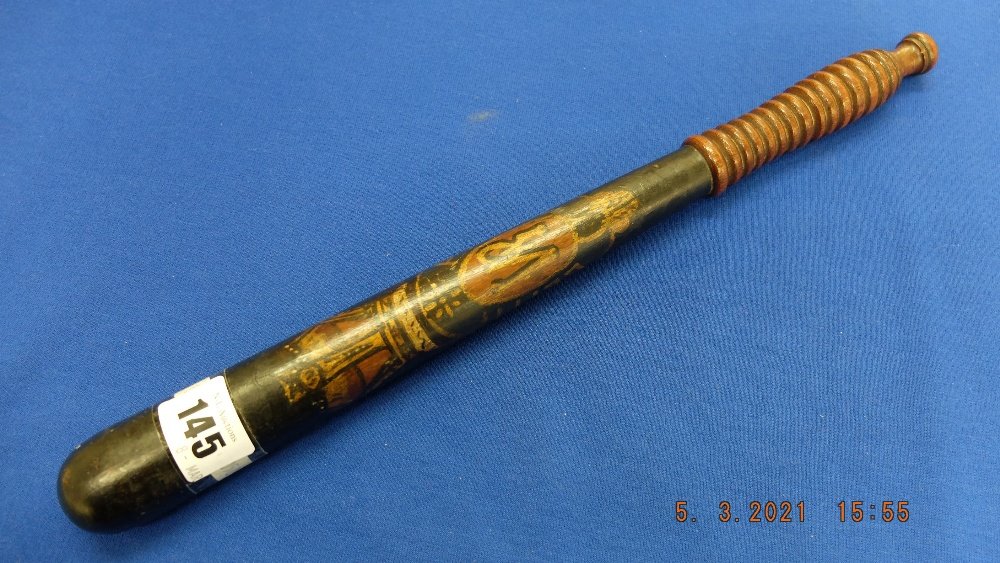
Policing in Leith goes back to the 17th century, when the High Constables of the Port of Leith were established. They were appointed by the Magistrates of the Royal Burgh of Leith to uphold "cleanliness and orderliness, keeping the peace, law and order".
The Leith Burgh Police were established in 1859 to cover the wider burgh of Leith defined in 1831 by the Great Reform Act. Policing of the port and docks was subsumed as a division, but the High Constables maintained (to this day) as an honourable society for ceremonial occasions
The helmet badge was from the traditional Leith coat of arms, with Mary and child on a galleon, underneath a tent. The date of 1563 refers to a letter signed by Mary Queen of Scots granting South Leith permission to erect a Tolbooth (a municipal house of customs, law and justice) 

The Tolbooth was one of the three essential public buildings of the Scottish Burgh; the other being the Mercat Cross and the Kirk. Granting Leith the right to erect a Tolbooth was a big step in its ancient struggle to exert independence from Edinburgh.
The English had burned Restalrig Tolbooth in 1544 during the "Rough Wooing" (Restalrig at that time was the administrative centre of South Leith) and since then Edinburgh had been trying to prevent Leith from re-establishing its own local centre of law, order and taxation.
Anyway, Leith Burgh Police was a small force, but one well respected for keeping law and order in the potentially lawless port town. They were merged into the Edinburgh City Police as D Division in 1921 (picture of their last parade © Edinburgh City Libraries) 

Leith policemen were distinctive for wearing a "ball top" to their custodian helmet, Edinburgh had these only for upper ranks, the rank and file had a "button top". (Button left, ball right - neither are Edinburgh or Leith helmets)) 

Leith's greatest contribution to the world of policing however is the legendary tongue twister "The Leith Police Dismisseth Us" which was apparently a test for drunkenness (but try saying it sober!), and entered into use around the world wherever policing was British-influenced.
The High Constables of the Port of Leith still exist as some sort of gentlemen's strutting around in top hats and suits with sticks club for ceremonial occasions (pic CC-by-SA, R. Clapperton via Edinburgh Collected) 

The High Constables can be seen here in Alexander Carse's painting of the arrival of Georve IV in Leith, backs to the artist with their top hats off. The fellows with the broad bonnets, white sashes and curving long sticks (bows) are the Royal Archers 

• • •
Missing some Tweet in this thread? You can try to
force a refresh


















